How does the wind affect daily life?
The wind can affect our daily lives in lots of different ways.
In this article you can learn:
- The advantages and disadvantages of wind
- How we can create energy using the wind
- How to measure wind speed
- Extreme windy weather conditions, like gales and tornadoes
This resource is suitable for weather topics for primary school learners.
Video - Windy weather and the world around us
Watch this video to learn how the wind affects our lives and the world around us.
We’ve all felt the wind blow. The wind helps us fly kites, sail boats and dry our washing when it’s out on the line!
Wind can be very helpful, but when it's too strong, it can be destructive.
Wind affects our day - to - day lives in lots of different ways.
Wind that blows around us can make us feel colder than the actual air temperature. This is because the wind moves heat and moisture away from our bodies. We call this wind chill factor. On hot days you might be glad of wind chill - it can cool our bodies and make the heat more bearable. But on cold calls wind can make us feel very chilly so we need to wrap up in warm.
The wind is useful in many ways. It scatters seeds from plants like dandelions and sycamore trees. The seeds are blown by the wind and fall to the ground where they can grow into new plants.
It blows away fog and pollution in cities, which helps make it clearer for us to see.
We can generate electricity using wind turbines. Wind turns huge blades which spins a generator to create electricity. This can help to power our homes and schools.
It’s not all good news though. Strong winds and gusts can make driving difficult for lorries and buses.
Planes, ferries and trains also have to be careful. They won’t set off in very windy weather because the strong winds make it less safe to travel.
Strong winds called gales can cause damage like blowing tiles off rooftops or branches off trees.
Some of the strongest winds recorded on earth are found in tornadoes. These are rapidly spinning columns of air that form between storm clouds and the ground.
The USA has the most tornadoes in the world and they can be very destructive. We get around 30 to 50 tornadoes a year in the UK but they are usually very small and don't have much impact.
So the next time you feel a gentle breeze blowing through the trees or hear the wind battering against your window, think about all the ways that wind can affect the world around us.
What are the advantages and disadvantages of wind?
Advantages
- Breezy weather is good for flying kites and hanging washing outside to dry.
- Wind moves heat and moisture away from our bodies. We call this wind chill factor and it can keep us cool on hot days.
- Wind is also important in nature. It helps some plants spread by blowing their seeds to new ground.
- It blows away fog and pollution in cities, which makes it easier for us to see and healthier to breathe.
- We can generate electricity using wind turbines.
Disadvantages
- Strong winds can affect how we travel. gustA sudden strong blast of wind that blows for a short time. can make driving difficult, especially for lorries and buses. Planes, ferries and trains won't set off in windy weather because strong winds make it unsafe to travel.
- Wind chill factor can make us lose body heat faster so we feel even colder on cold days.
- Wind chill can damage plants and make their leaves dry up.
- High winds can put migrating birds off course or tire them out.
- galeVery strong wind. can be powerful enough to bring down roof tiles and tree branches.

Image caption, Scattering seeds
Sycamore seeds are shaped like little helicopters. They are blown by the wind then they fall on the ground where they can grow into a new tree.
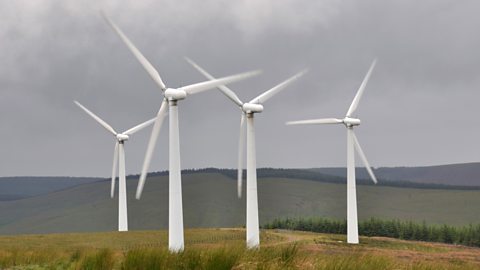
Image caption, Wind power
We can generate electricity using wind turbines, like these turbines on Hagshaw Hill, near Douglas. (Andy Sutton / Alamy Stock Photo)
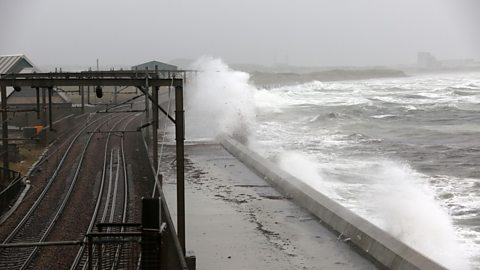
Image caption, Disrupting travel
Strong winds can make it very unsafe to travel. If it is too windy, planes, ferries and trains won't set off until it is safer to do so. (Alister Firth / Alamy Stock Photo)
1 of 3
What is a tornado?
- Some of the strongest winds recorded on Earth are found in tornadoes.
- A tornado is a rapidly spinning column of air that forms between storm clouds and the ground.
- They can cause lots of damage by blowing down buildings and trees.
- The USA has the most tornadoes in the world.
- In the UK, we get about 30-50 tornadoes each year but they are usually small and not destructive.
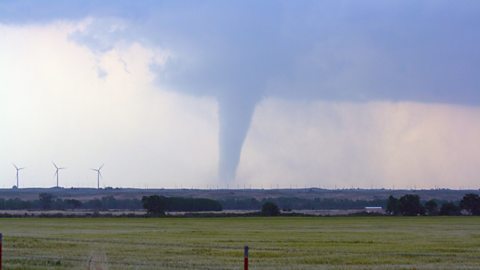
How to measure wind speed
Video - Measuring wind speed
With help from BBC Weather's Kawser Quamer, let's learn:
- Why it is important to measure wind speed
- How we measure wind speed
- What an anemometer is
KAWSER: It's a very windy day out there today and you can see from the weather map. These black circles show the wind gusts and the bigger the number the stronger the wind. But how do we measure wind speed? And why is knowing that so important?Wind is moving air. The faster the air is moving, the stronger the wind and the more damage it can cause. Strong winds have special names, including gales, hurricanes and typhoons. Because fast winds are stronger and have more energy, that means they can be more useful.
Strong winds will turn a wind turbine more quickly than light winds and that means they can generate more electricity.
Lots of things can affect the wind speed: where you are in the UK, whether there are any obstructions like trees and buildings nearby, the height above ground level. Winds are slowed down when they blow over the ground. That's why wind turbines are so tall, so that they're up where the wind is faster.
The simplest way to measure wind speed is to look around you and compare what you can see the wind doing with something called the Beaufort scale.
There are twelve parts to the Beaufort scale. Zero means it is very calm with little wind and you could see smoke from a chimney going straight up. And at the top of the scale is twelve: hurricane force winds of over seventy four miles per hour where you could see fallen trees and things from your garden, blowing down the road.
PUPIL: Gentle breeze, eight to twelve miles per hour.
PUPIL: Flags flap, leaves and twigs move constantly.
PUPIL: Yeah, two's really normal and then three… three's like what we have today.
KAWSER: The speed of the wind can be measured more accurately using an anemometer and is recorded in miles per hour or knots. Miles per hour and knots are both units of speed.
An anemometer has cups that rotate when the wind blows into them. The faster the wind, the faster the cups spin. By counting the number of rotations in a minute, we can calculate the speed of the wind.
So now you know how to measure wind speed, maybe you can find out how windy it is where you are.

Key words about windy weather
- wind chill factor - When wind blows around us, it can make us feel colder than the actual air temperature. This is because the wind carries heat and moisture away from our bodies.
- wind turbines - Huge windmills with blades that rotate to spin a generator and make electricity.
- gust - A sudden strong blast of wind that blows for a short time.
- gales - Very strong wind.
- tornado - A kind of storm where the wind rotates in a column between the clouds and the ground.
Test your knowledge
Quiz
Test your knowledge of wind with this short multiple choice quiz.
Challenge

Design a symmetrical kite.
Light wind is great for flying kites. Try creating your own kite for a windy day. Experiment with colours and patterns!
Remember…
A 2D shape is symmetrical if a line can be drawn through it so that either side of the line looks exactly the same.
Learn about symmetrical shapes here: What makes a shape symmetrical?
More to learn about wind
How can we use wind to generate renewable energy in Scotland?
Wind energy. revision-guideWind energy
Wind power is a renewable energy source that is used to generate electricity. Find out how wind turbines work and how they can help us live more sustainably.
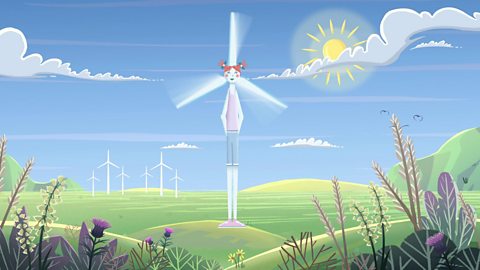
Secrets of an Engineer. audioSecrets of an Engineer
Lorna Bennet is part of a team who build wind turbines.
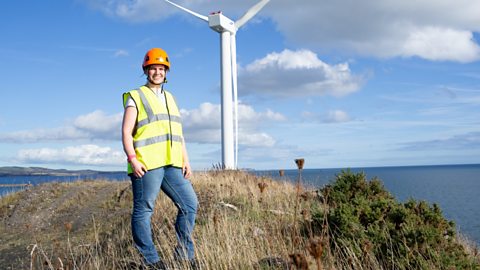
More on Weather
Find out more by working through a topic
- count21 of 24
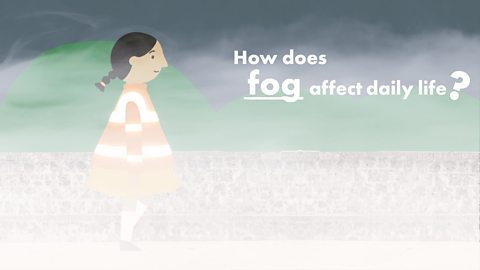
- count22 of 24

- count23 of 24
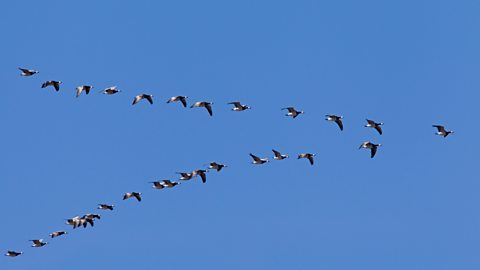
- count24 of 24
